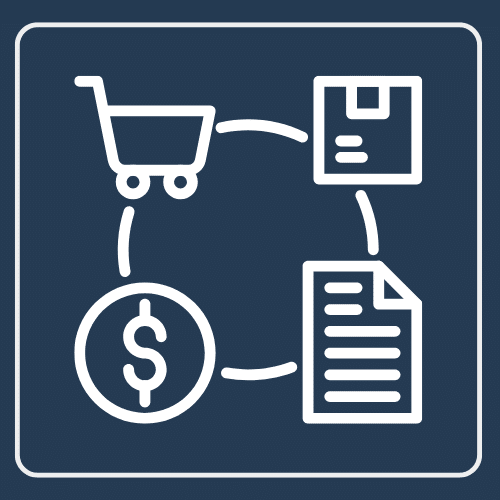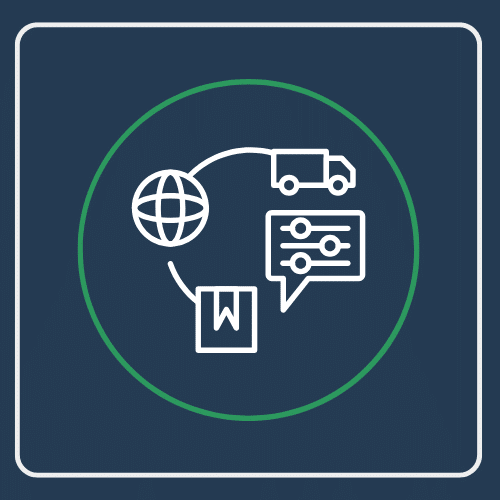SAP Spend Management: the complete guide to optimizing your expenses
You are here : Home " SAP Guide " SAP Solutions "SAP Spend Management
Invisible expenses kill margins.
Each department buys, each team negotiates, each signs its own contract. The result: an unreadable jigsaw puzzle in which no one has the whole picture.
SAP Spend Management doesn't just promise to "manage purchasing". It reconnects every euro spent to a clear strategy: costs controlled, risks monitored, suppliers aligned.
The difference is radical: you no longer "track your expenses", you base your business decisions on them.
👉 Spend management then becomes a survival and growth tool.
Definition of SAP Spend Management
Key concepts and terminology
"To buy without seeing is to lose without knowing."
Most organizations confuse "purchasing" with "spending". As a result, they manage their costs with a blind spot.
SAP Spend Management provides a clear framework:
- Direct purchases raw materials, components, everything that feeds the supply chain.
- Indirect purchases Services, IT, travel, suppliers, everything that supports the organization but remains outside production.
- External workforce : managed via SAP Fieldglassessential in hybrid organization models.
- Contracts and obligations The only thing you need to know is that they are linked to financial flows, not in some forgotten folder on SharePoint.
The aim is not just to classify expenses, but to make them visible, traceable and exploitable.
The evolution of SAP's spend management solutions
Ten years ago, SAP concentrated on ERP and accounting flows. Purchasing remained dispersed in ancillary systems.
Then came SAP Aribacloud platform for connecting companies and suppliers. Then SAP Fieldglass broadened the spectrum to include the external workforce. And with S/4HANAPurchasing data is directly integrated into the heart of finance.
Today, SAP Spend Management is the union of these building blocks:
- Ariba for supplier collaboration and the source-to-pay cycle.
- Fieldglass for managing service providers and temporary workers.
- S/4HANA to link expenditure to financial management.
It's not a "suite of tools": it's a system designed to turn every expense into actionable insight.
In other words, SAP has transformed spend management from a simple operational support function into a strategic lever for cash flow, compliance and supply chain resilience.
Objectives and benefits of SAP Spend Management
Every expense tells a story.
Some strengthen margins, others erode them. The problem is that most companies don't know the end of the story until they see the consolidated bill.
SAP Spend Management corrects this bias by collection, analysis and control expenses before they get out of hand.
Cost reduction and control
Invisible costs lurk in indirect purchasing: duplicate IT licenses, forgotten service contracts, payment terms never renegotiated.
With SAP, these lines cease to be background noise. The system identifies duplicates, alerts on deviations, standardizes conditions. As a result, spending becomes predictable rather than sudden.
Improved compliance and transparency
Every contract signed is binding on the company. But without centralized control, it's hard to know whether conditions are being met.
SAP Spend Management trace every commitmentlinks the order to the contract, and monitors execution. Compliance is no longer an annual checklist, but rather a flow monitored in real time.
Optimizing collaboration with suppliers
A poorly managed supplier relationship is always costly: delays, disputes, supply chain disruptions.
With SAP Aribacollaboration is no longer a scattered exchange of e-mails. It's a structured network Sourcing, tendering, negotiation, performance monitoring. Suppliers become measured partners, not tolerated strangers.
👉 Real benefit: move from passive purchasing management to active spend intelligence. Every outgoing euro is justified, controlled and linked to business strategy.
Key features of SAP Spend Management
A slow purchasing process means evaporating margins.
Every day of delay, every duplicate, every forgotten contract eats away at performance. The promise of SAP Spend Management is not just to "digitalize purchasing". It's about cutting through complexity and empowering decision-makers.
Here are the features that turn expense into competitive advantage.
In short: SAP Spend Management not only digitizes purchasing, it also automates, controls and links spending to strategy. Finance and purchasing departments no longer have to endure the P2P cycle: they can control it, from end to end.
Architecture and technical environment
A poorly chosen system becomes a burden.
High-performance spend management depends not only on functionality, but also on the architecture that supports it. Cloud, on-premise, hybrid: each choice affects speed, security and scalability.
SAP Spend Management stands out because it adapts to organizational models rather than constraining them.
Cloud, on-premise or hybrid deployment
- Cloud speed, continuous updates, global access for teams and suppliers. This is the logic behind Ariba and Fieldglass: the entire supplier network is already connected.
- On-premise Still preferred by some groups for reasons of sovereignty or legacy integration. More cumbersome, but sometimes essential when internal rules require it.
- Hybrid the most common compromise. Typical example: S/4HANA installed in-house, with Ariba and Fieldglass in the cloud. Result: flexibility + continuity.
The real challenge is not to choose an "ideal option", but to take the one that aligns IT strategy and financial priorities.
Connection to SAP Fiori and user interfaces
Architecture is only as good as the people who use it. And nobody wants to spend their days in an unreadable ERP.
With SAP Fiori, the interface is a game changer:
- Intuitive, role-based navigation (buyers, accountants, managers).
- Custom cockpits to monitor budgets, contracts or suppliers.
- Consistent experience across desktop and mobile.
The concrete effect: rapid adoption, less training, and above all real daily use, not a tool bypassed by parallel Excel.
Safety and regulatory compliance
Purchasing has direct access to cash, contracts and supplier data. In other words, security is non-negotiable.
SAP integrates :
- Role-based access controls (who validates what, at what level).
- Full traceability Every order, every approval, every modification is logged.
- Regulatory compliance (SOX, RGPD, IFRS depending on the context).
It's not just a "technical plus": it's insurance against financial and legal risks. An audit takes hours to prepare, not weeks.
👉 To put it plainly: architecture is not a secondary issue. It determines whether your spend management will be a tool for growth or a costly IT burden.
SAP Spend Management use cases
A good system is judged in real-life situations.
It's when the supply chain breaks down, when a contract disappears, or when a budget explodes, that the value of integrated spend management is measured.
Here are three cases where SAP is changing the game.
Optimizing the Procure-to-Pay cycle
Problem: Every order goes through emails, lengthy approvals and manual data entry. The result: delays, errors and frustrated suppliers.
SAP solution : With integrated Procure-to-Pay, the purchase requisition is automatically transformed into an order, receipt is tracked in real time, and payment is triggered without friction. Everything is logged, validated and aligned with the budget.
Impact: Cycles are shortened, and teams move from "monitoring" to proactive supplier management. And the finance department gains immediate visibility of future commitments.


Monitoring of external workforce and service providers
Problem: Companies are outsourcing more and more, but without any structured follow-up. The result: duplicate invoices, service providers paid outside the contract, costs invisible in budgets.
SAP solution : With Fieldglass, each service is linked to a contract, and each external resource is tracked as a financial asset. Hours are validated by automated flow, and costs consolidated in S/4HANA.
Impact: Service providers are no longer a "grey area", but a clear line in the overall spend. The purchasing department controls spending, while the finance department ensures compliance.
Improving supply chain resilience
Problem: A critical supplier fails, and the whole production line slows down. Most companies discover the problem when it's already too late.
SAP solution : With Ariba Network and integrated analytics, buyers identify critical dependencies, measure lead times and requalify suppliers on an ongoing basis. Alerts signal delays before they impact the supply chain.
Impact: The supply chain becomes more resilient. Less dependence on a single player, greater visibility on alternatives, and operational continuity even in the event of an external shock.

👉 These use cases demonstrate a simple logic: SAP Spend Management does not "digitalize purchasing". It transforms expenditure into a signal of anticipation.
Outlook and developments
To believe that spend management is limited to reducing costs is to miss 80 % of the potential.
The future will not be won by those who cut with machetes, but by those who transform expenditure into usable intelligence.
Artificial intelligence and advanced automation
Today, many companies still waste time manually validating purchases that could have been self-approved with clear rules.
Tomorrow, the AI embedded in SAP will analyze thousands of transactions, detect anomalies and predict budgetary slippages before they happen. Automation doesn't just save time: it eliminates human bias (e.g. validating an overpriced supplier out of habit) and transforms the spend into a self-regulating flow.
Contribution to CSR and sustainability objectives
Regulatory and societal pressure will not disappear. Companies will be judged on their ability to buy responsibly: carbon footprint, supplier inclusion, compliance with social standards.
SAP Spend Management already integrates these dimensions:
- Monitoring CSR indicators in calls for tender.
- Supplier selection based on extra-financial criteria.
- Data consolidation to prove compliance to regulators.
Spending is no longer just an accounting item: it's a demonstration of responsibility and a brand asset.
Spend as a strategic lever
For decades, purchasing departments have been perceived as "cost killers". But in a context of fragile supply chains and ESG pressures, the role is changing.
With SAP, expenditure becomes a variable of anticipation: it reveals risks, guides strategy and aligns the company with its financial and social commitments.
In other words, the evolution is not technological but cultural: spend management is moving away from a "reduction" logic towards a "value and sustainability" logic.
A euro spent is a signal.
It tells you whether the company is building value or letting its margins slip.
With SAP Spend Management, every expense becomes a visible, controlled flow linked to strategy. It's no longer a cost center, but a lever for growth, compliance and resilience.
The real transformation? To go from "suffering purchasing" to running the business through it.

